I certainly confront a lot of bad Spanish in my professional role as a Spanish teacher. And on this blog, I’ve called out several examples of bad Spanish in street signs, Trader Joe’s packaging, and the like. So it was refreshing when, on my recent trip to Andalucía, I started to notice examples of bad ENGLISH — that is, bad translations from Spanish into English — in signage created with English-speaking tourists in mind. I’ve included some examples below, with explanatory captions.
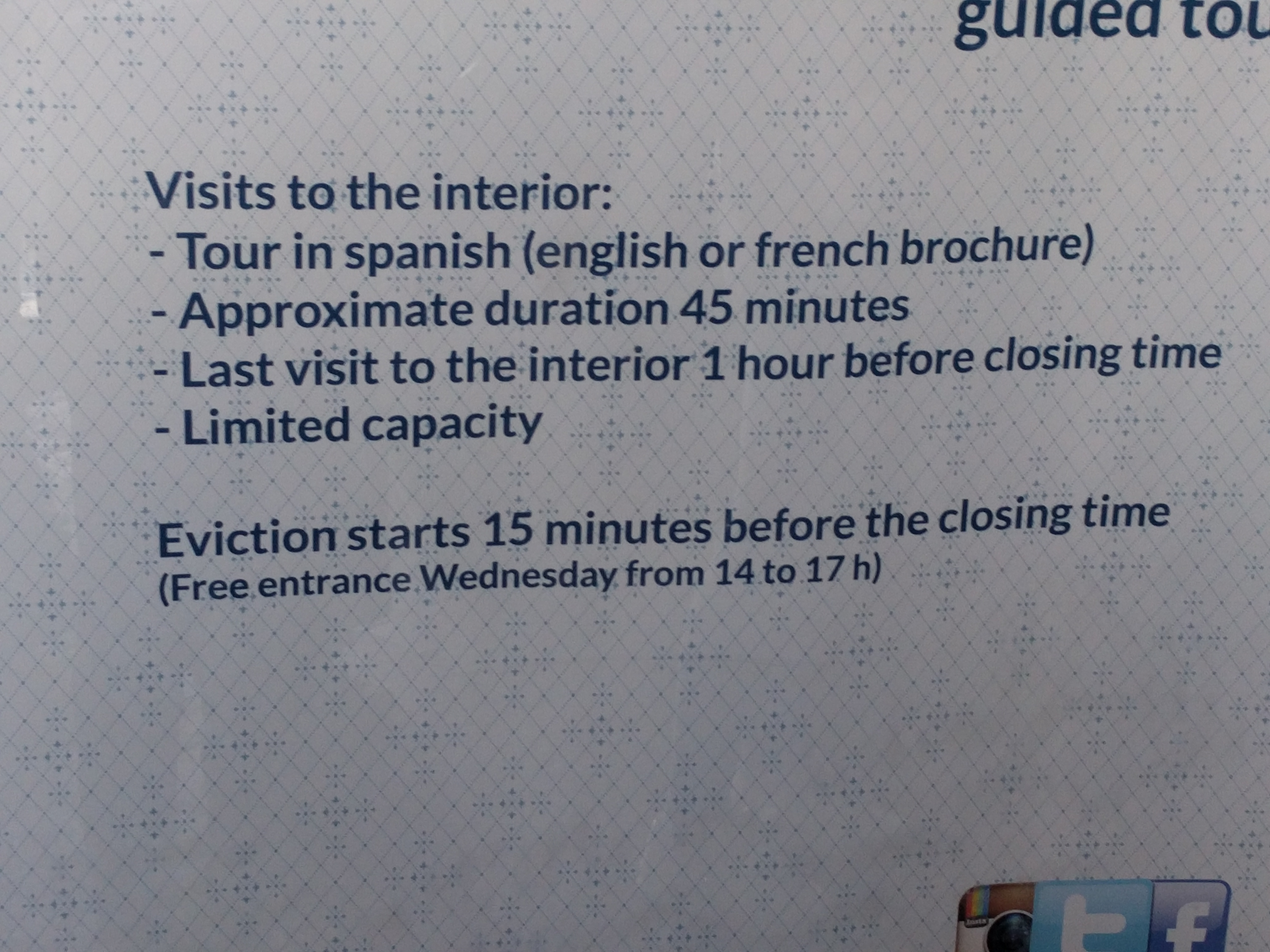
This “eviction notice” was by far my favorite example of “bad English” on the trip. How about “Please exit 15 minutes before the closing time”? From the Palacio de Viana in Córdoba.
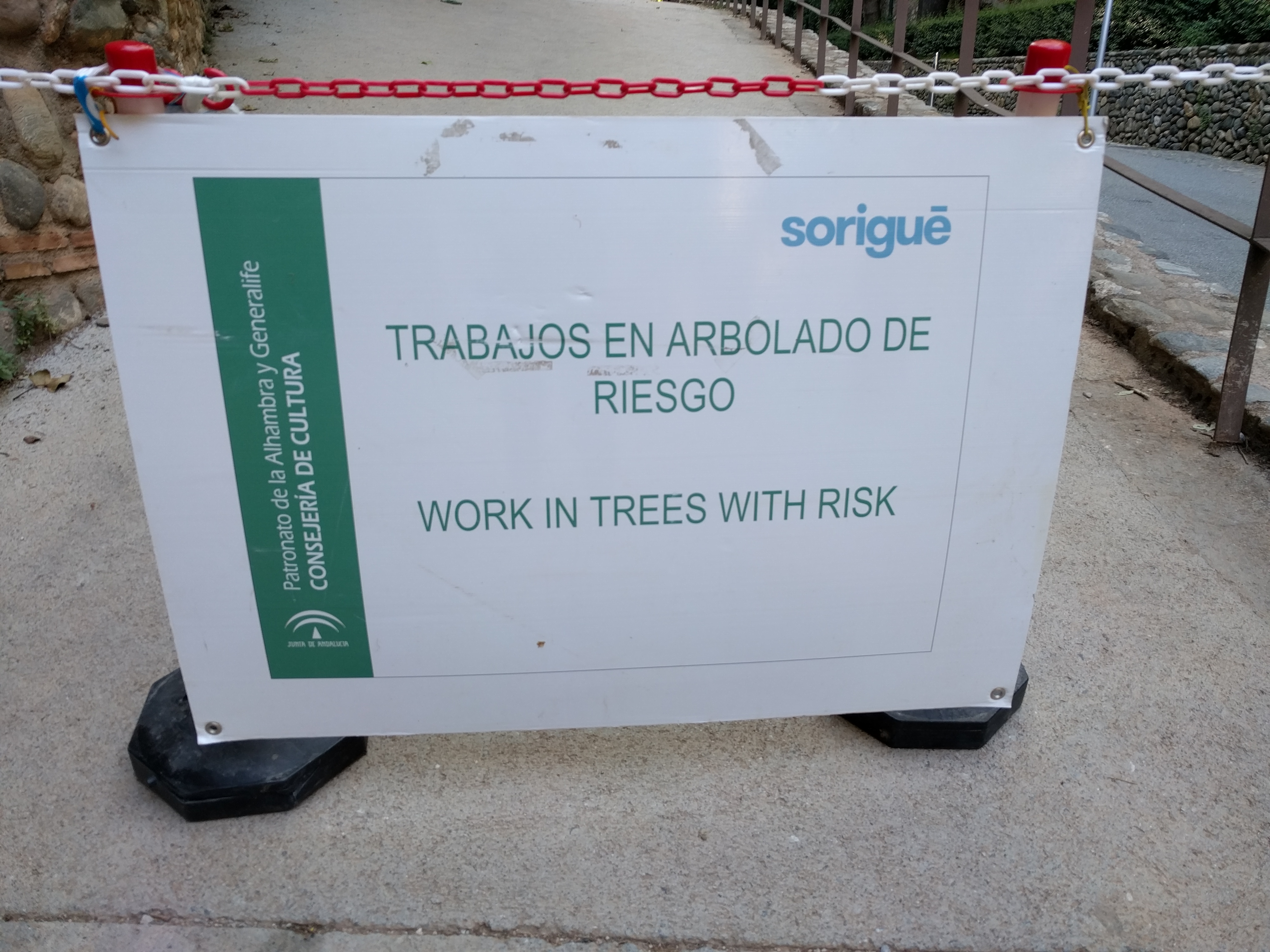
A better translation might be “Danger! Tree work!” Cádiz.
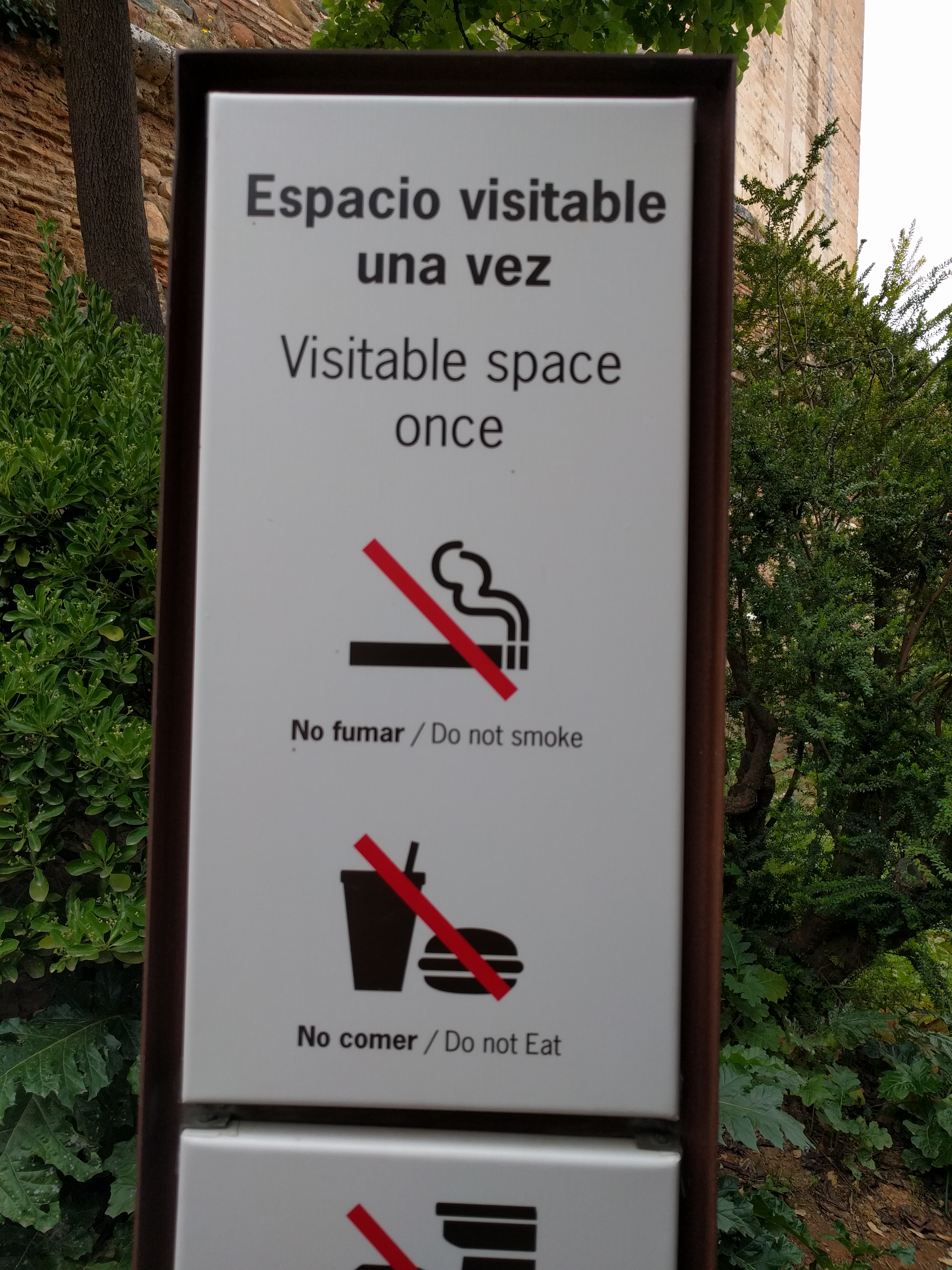
The problem here is the first element in the sign. A good translation might be “One entrance per ticket.”
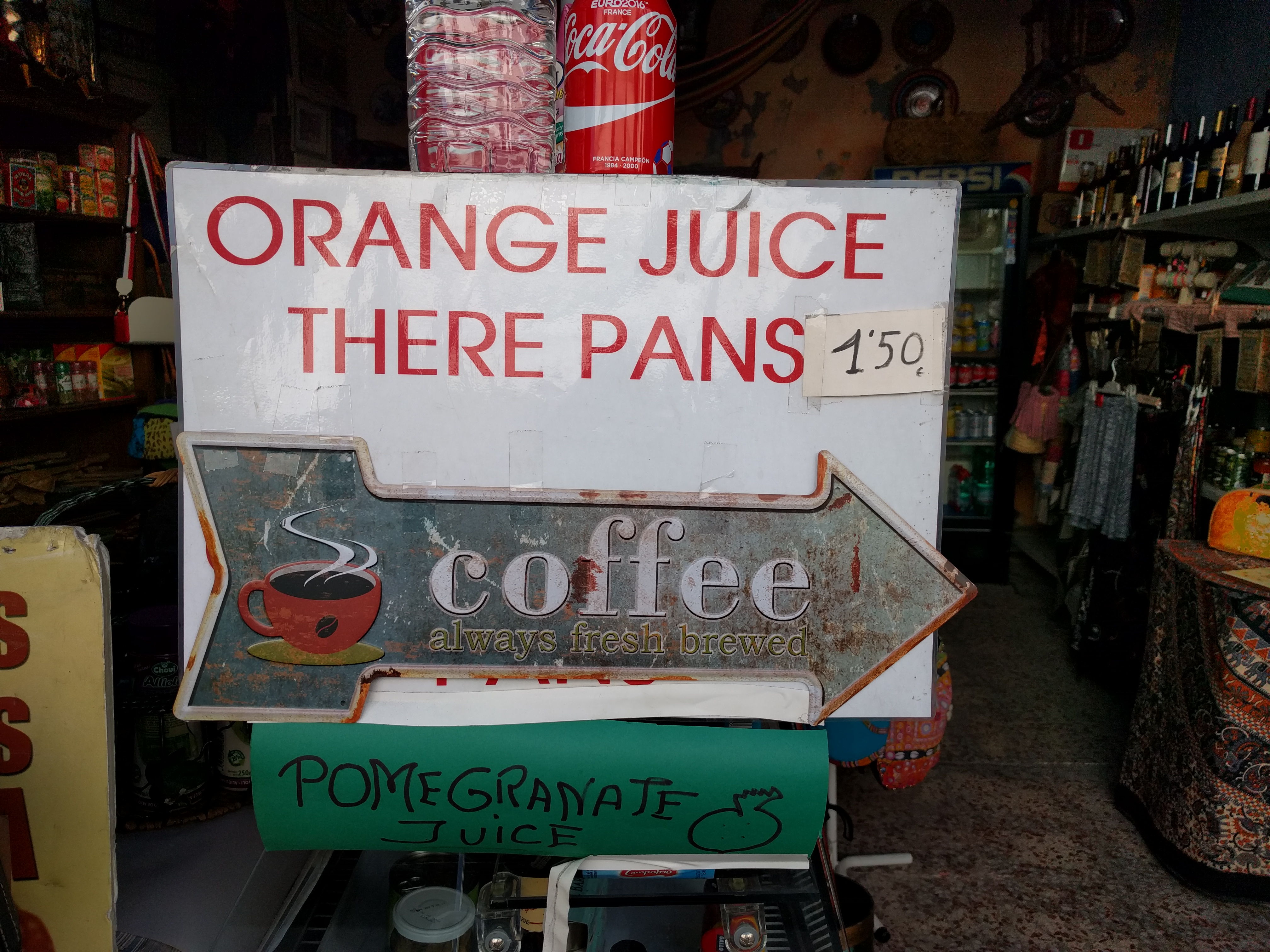
This was the most intriguing “bad English” sign I saw in Spain. Perhaps the author was trying to translate “Hay pan”: ‘There is bread’, i.e. ‘We have bread.’
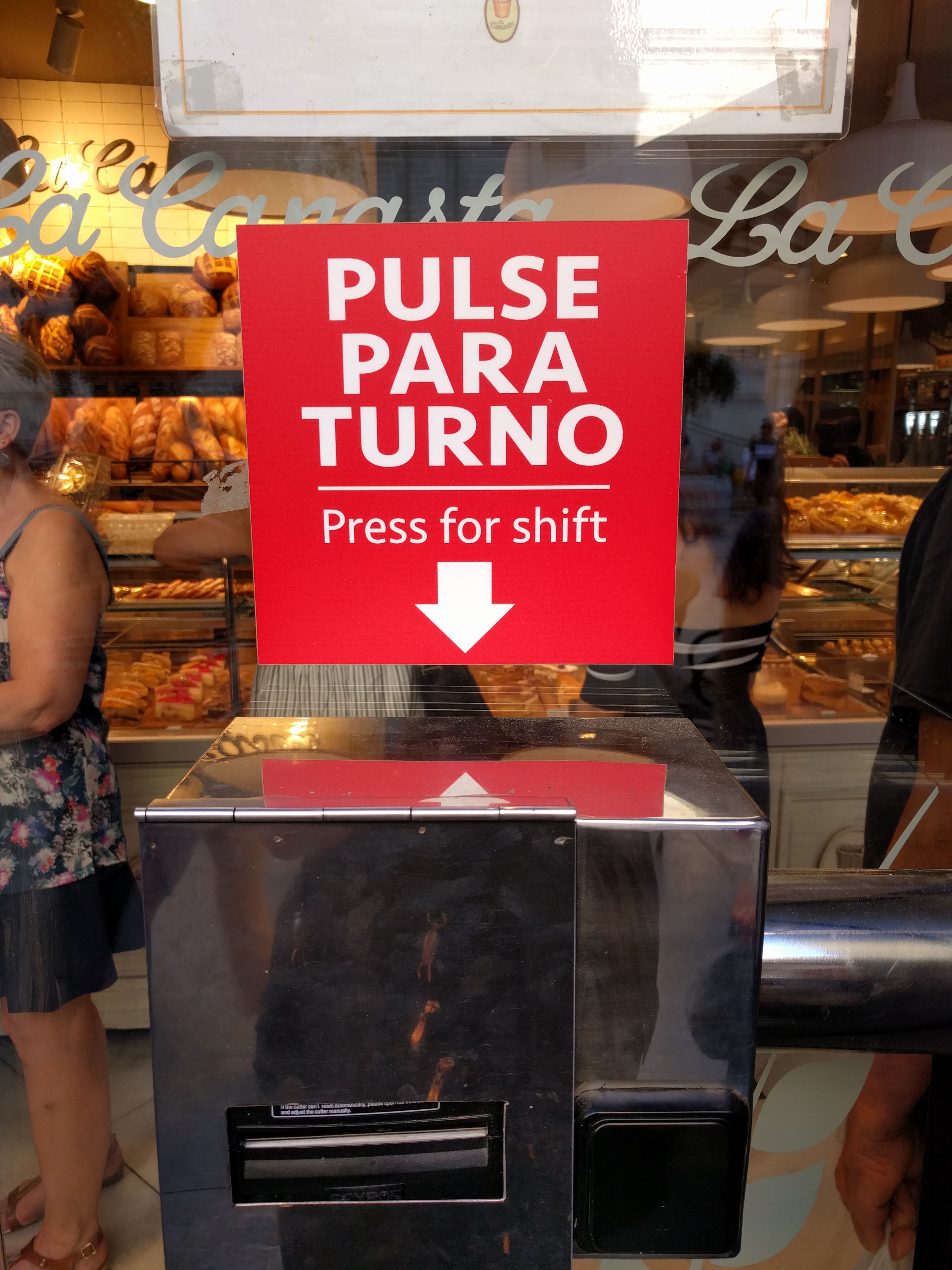
A “turno” can indeed be a work shift (e.g. 9-5), but the correct translation here would be a simple cognate, i.e. “Press to take a turn” or perhaps “Press for ticket,” with the turn-taking function of the ticket merely implied. Picture taken at La Canasta bakery in Sevilla, across the street from the cathedral.
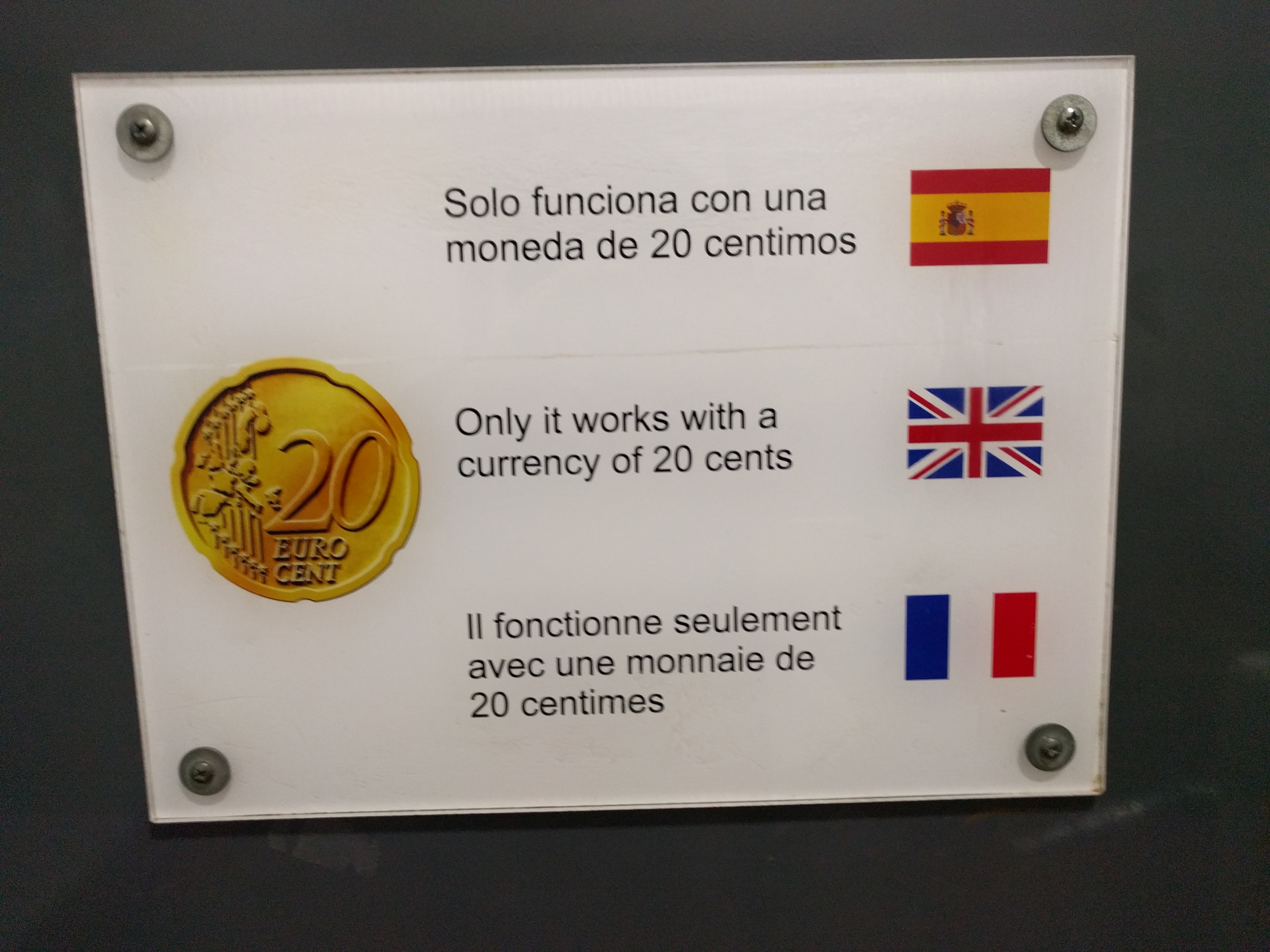
What a lovely bit of scrambled syntax! The French translation, in contrast, looks fine to me.
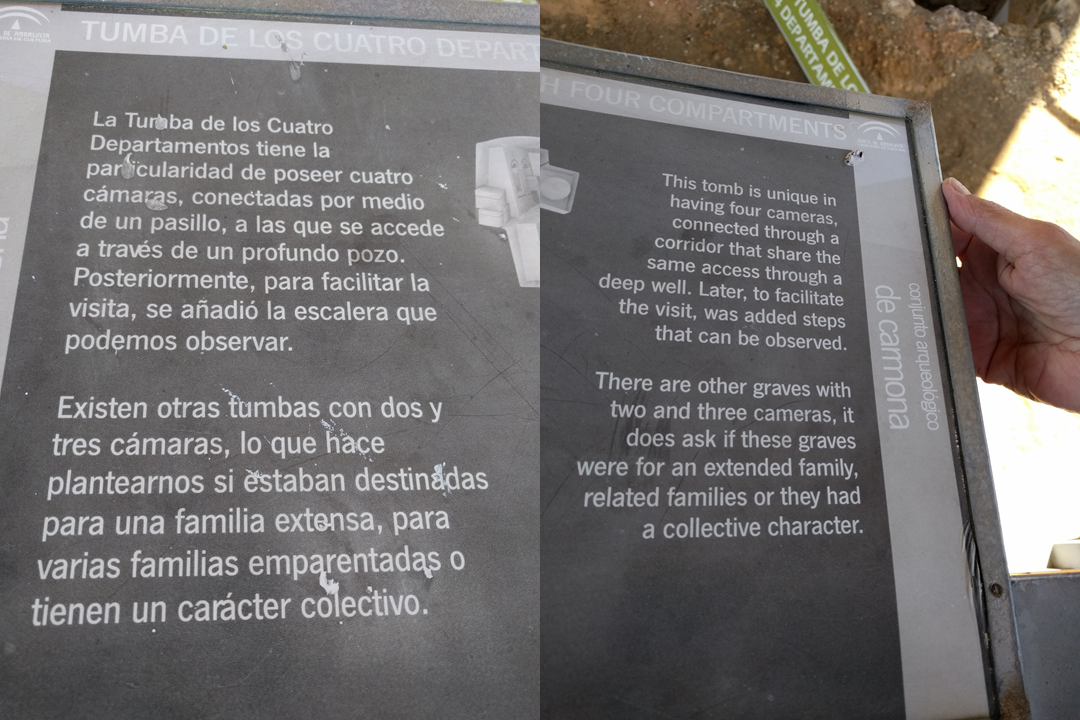
The four “cameras” in this famous tomb at the Carmona necropolis are rooms, not pieces of photo equipment. Indeed, the English word “camera” can be traced to the ‘room’ meaning of the Latin root via the “camera obscura” device.
